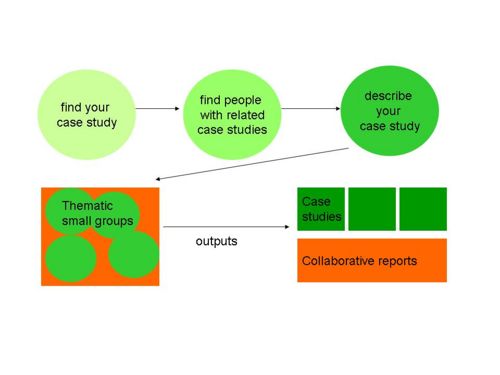Minutes + Recordings: Difference between revisions
No edit summary |
No edit summary |
||
| Line 19: | Line 19: | ||
It is hoped that | It is hoped that | ||
*Working Method | *Working Method | ||
[[Image:Working_method.jpg| | [[Image:Working_method.jpg|500px]] | ||
*Topic Map + Round of Introductions | *Topic Map + Round of Introductions | ||
*Next Steps | *Next Steps | ||
*Questions & Answers | *Questions & Answers | ||
Revision as of 16:55, 2 November 2008
Minutes of First Plenary Session, 28th of October 2008
Agenda:
- Seminar Context + Objectives
Ellen Fetzer introduced the objectives of the seminar. For the first time in human history, the earth’s population became more urban than rural, that turn was reached on May 23rd 2007. The most rapid urbanisation process are expected for China and Africa within the next decades. Urban Landscape is regarded as a concept that supports integrative approaches beyond sectoral boundaries. Landscape architecture is only one of many players in the Urban Landscape. However, this seminar is not meant to be interdisciplinary because it addresses landscape architects. Particularly, the seminar will look at the role of landscape architecture in the context of making urban landscapes more sustainable and liveable. In the context of landscape architecture urban landscape is the sum total of the unbuilt land within and around our towns. The method applied in this seminar is case study analysis and comparison.
After this seminar students should …
- Know how to use the case study method
- Have some profound knowledge of LA projects
- Have an idea of what influences landscape architecture in the urban context
- Have looked beyond your national perspective
- Have worked in an international small group
- Have edited on the WIKI and used a virtual classroom
It is hoped that
- Working Method
- Topic Map + Round of Introductions
- Next Steps
- Questions & Answers
